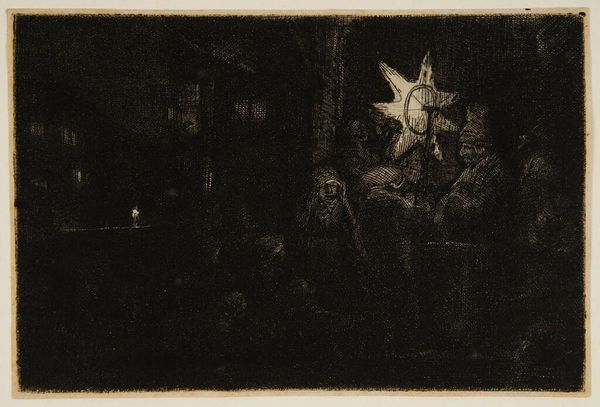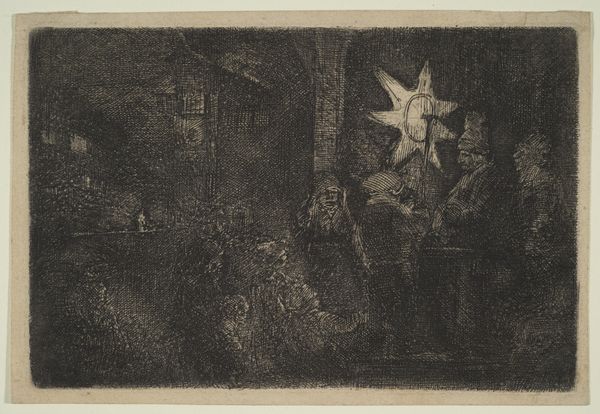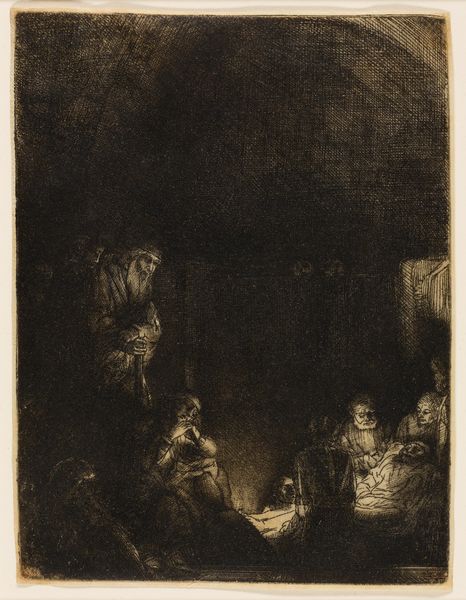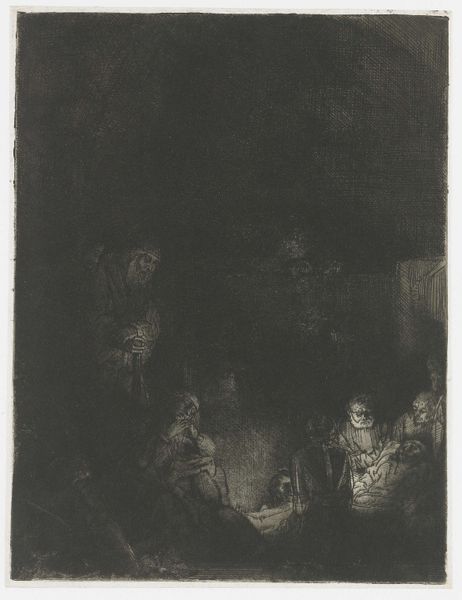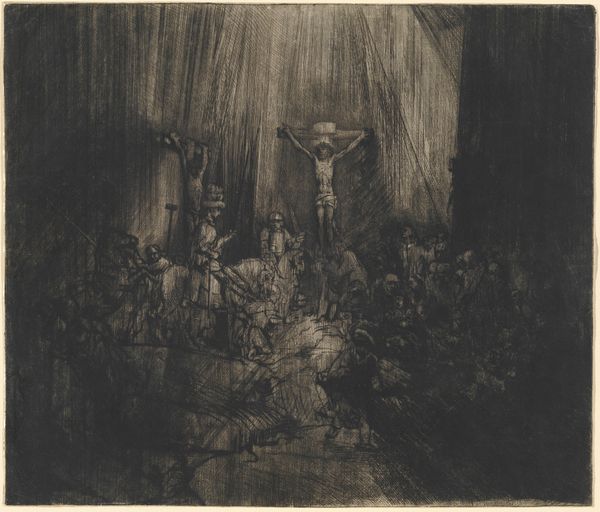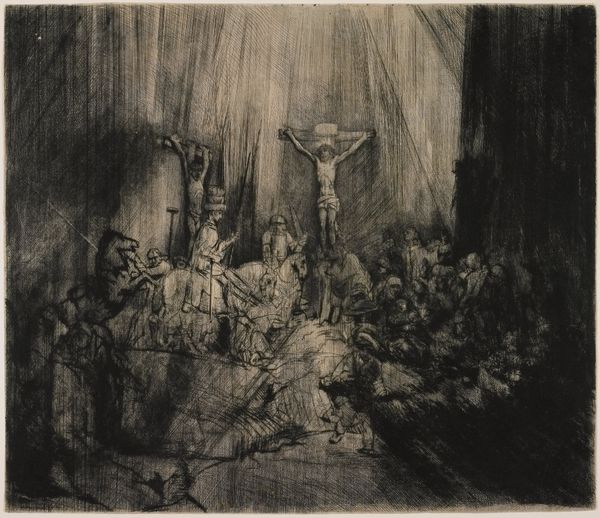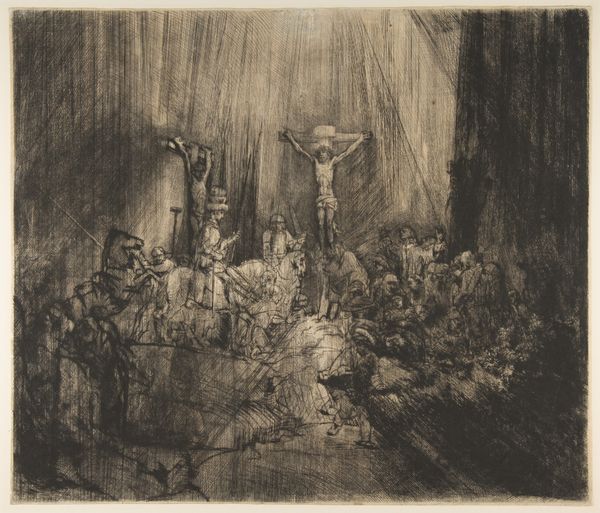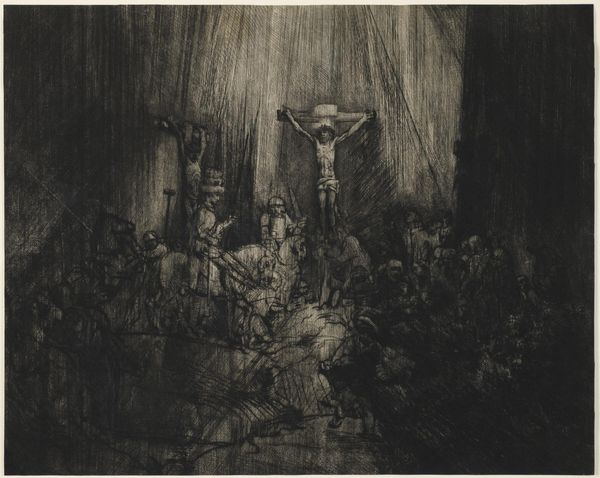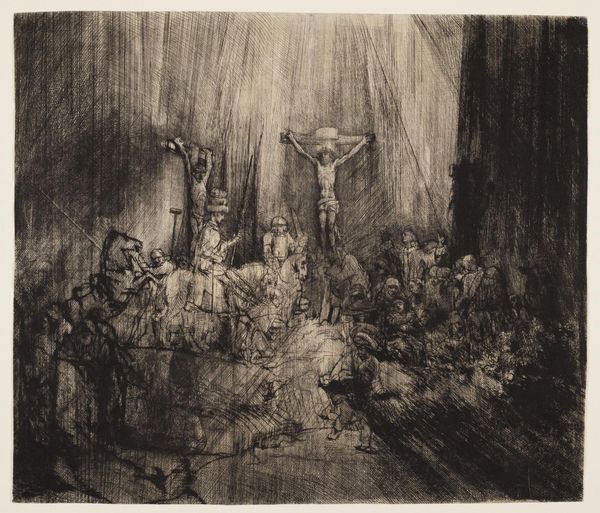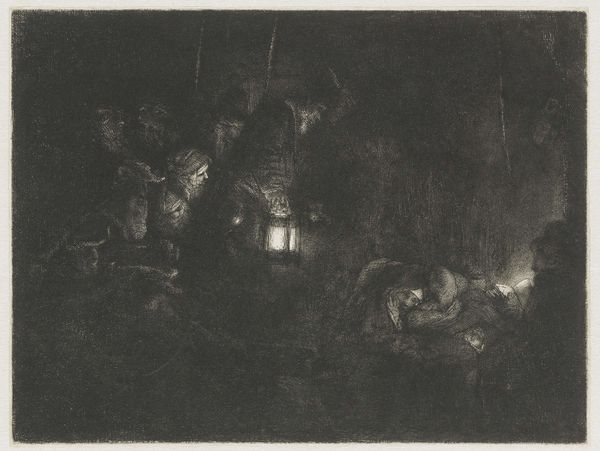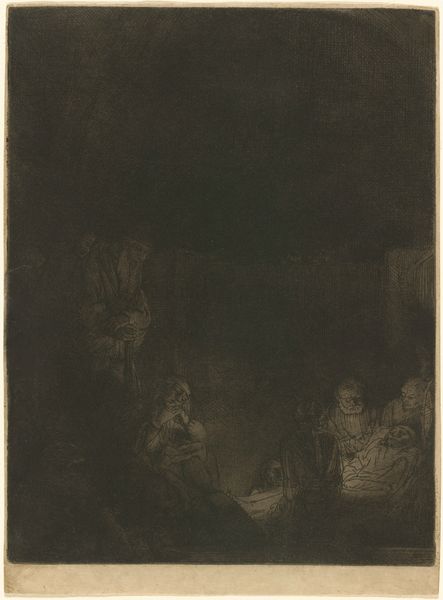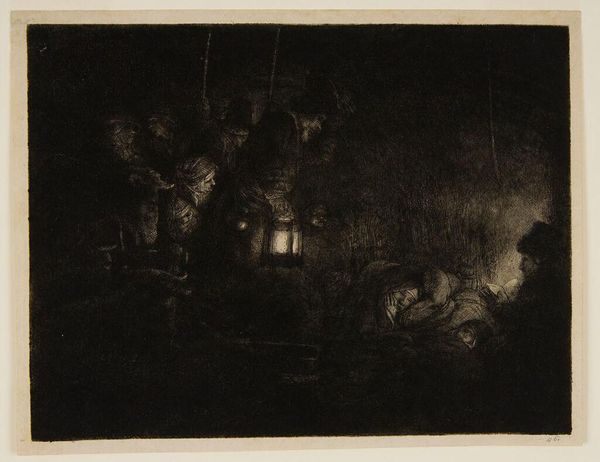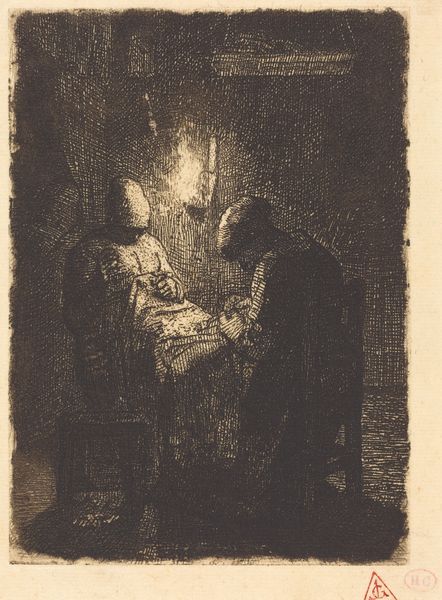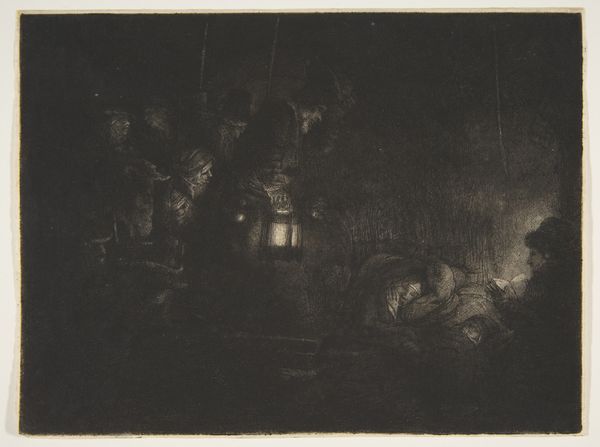
drawing, print, etching, paper, ink, engraving
#
drawing
#
medieval
#
narrative-art
#
baroque
#
dutch-golden-age
# print
#
etching
#
sculpture
#
paper
#
ink
#
chiaroscuro
#
history-painting
#
engraving
Dimensions: 93 × 142 mm (image/plate); 95 × 144 mm (sheet)
Copyright: Public Domain
Editor: This is "The Star of the Kings: A Night Piece," an etching by Rembrandt van Rijn from around 1651, currently housed at the Art Institute of Chicago. It's incredibly dark; a night scene rendered in such intricate detail despite the overwhelming darkness. How do you interpret this work, focusing on Rembrandt's choices in materials and process? Curator: For me, this work speaks volumes about the labor involved in its creation and reception. Consider the materiality – an etching, demanding immense skill and time to produce the plate from which these images are born. The very process is about reproduction, about making the image accessible to a wider, perhaps less affluent, audience than a painted canvas would reach. The stark chiaroscuro isn't just about drama; it's about controlling ink distribution to convey light with sparse means, a type of material economy. Editor: That’s interesting! So you’re saying that his artistic decisions regarding the amount of shading could reflect broader themes of that time period. Can we extend this line of reasoning? Curator: Precisely. Ask yourself, how might the paper used, the ink's composition, influence our understanding? Were these materials locally sourced? The context matters! It impacts both the final product’s appearance and distribution, thus determining who could own and interact with it. Rembrandt, though renowned, operated within a specific marketplace of artistic materials and consumer demand. This piece, being a print, suggests a conscious decision to engage in that system, influencing artistic value perceptions in Dutch Golden Age society. Editor: So, we are acknowledging his genius but we also question the material conditions, labour and even market forces? I never thought of it that way! Curator: Exactly. We celebrate artistic ingenuity while acknowledging the materials and making it happened within the existing cultural context. It is from those limitations that many artists get very creative.
Comments
No comments
Be the first to comment and join the conversation on the ultimate creative platform.
